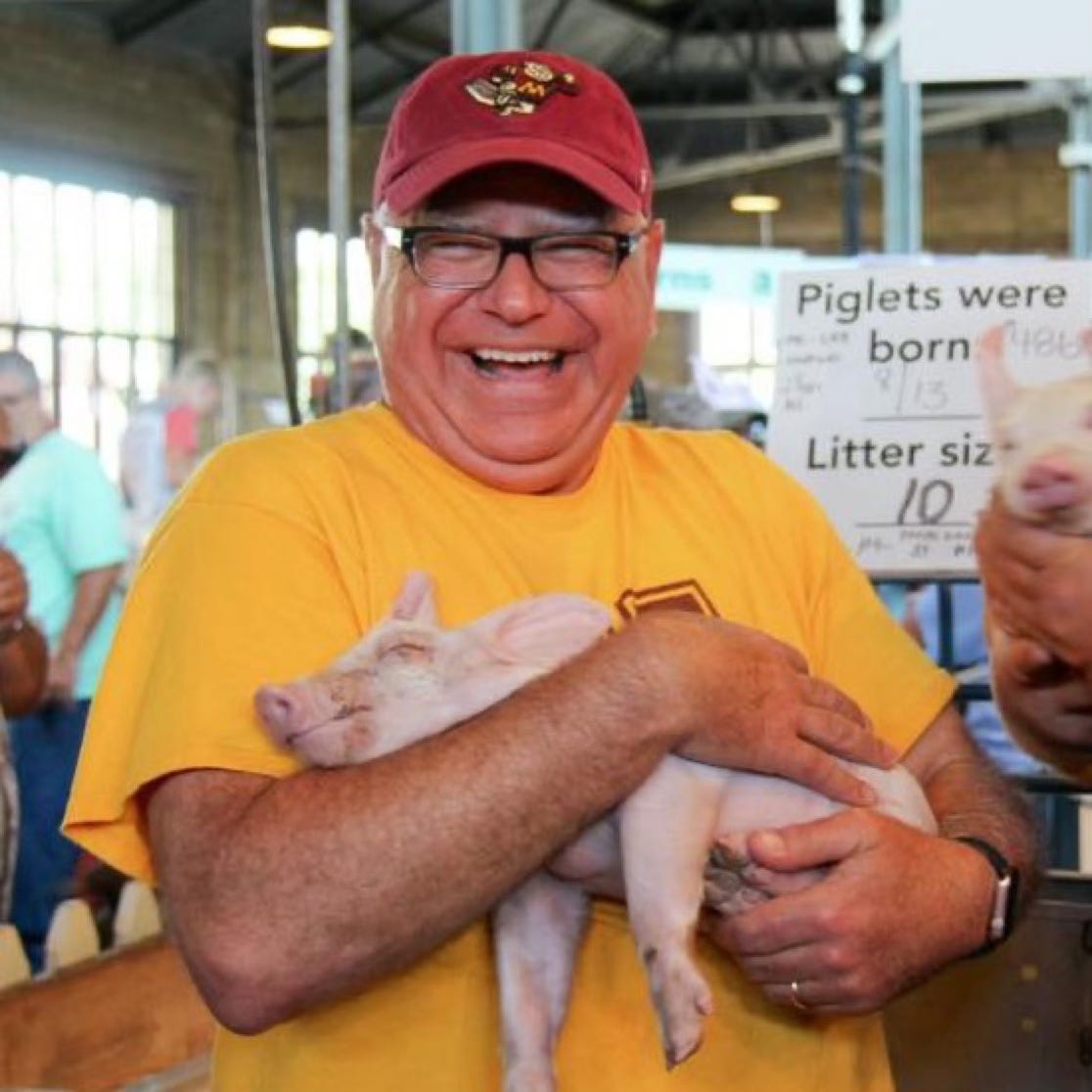What Does Tim Walz Bring to the Democratic Ticket?
Everything, topped with a grin as big as a Boundary Waters canoe
Tim Walz cuddling a sleeping piglet at a 4H booth at the 2019 Minnesota State Fair. Photo credit: Office of the Governor of Minnesota/Facebook
Keep reading with a 7-day free trial
Subscribe to Political Junkie to keep reading this post and get 7 days of free access to the full post archives.




